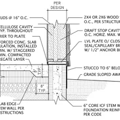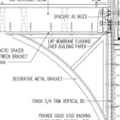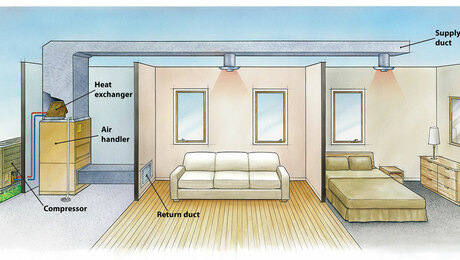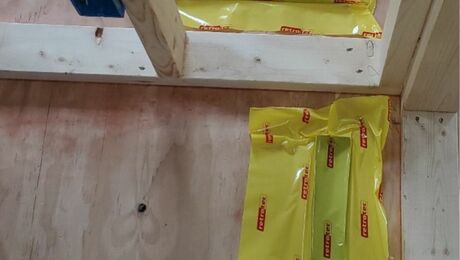Airkrete?
There seems to be precious little imformatiom out there regarding Airkrete. Most of what I can find aside from the slightly eccentric website is either old articles or discussion threads that don’t really lead anywhere meaningful.
A few I found:
https://federalconservation.com/wp-content/uploads/2017/05/Environ-Building.pdf
https://www.buildinggreen.com/news-analysis/what-about-air-krete-deeper-look-insulation-alternative
https://youtu.be/azviYgjHUV8?feature=shared
A local(ish) contractor who does it made it sound good, but then again that is their job.
There was an old Green Building Advisor thread where a person asked about direct experiences with it and it didn’t get much discussion…hoping I can stir the pot here a little and resurrect the topic!
GBA Detail Library
A collection of one thousand construction details organized by climate and house part









Replies
Bill,
A couple more:
https://www.greenbuildingadvisor.com/question/any-new-insight-on-air-krete
https://www.greenbuildingadvisor.com/question/air-krete-2
You're right, finding comprehensive and recent information on Airkrete can be tricky. While the company website paints a rosy picture, independent sources offering in-depth analysis are scarce.
YouTube video (2019): Showcases installation but lacks independent evaluation: [https://youtu.be/azviYgjHUV8?feature=shared geometry dash meltdown]
You're right, finding comprehensive and recent information on Airkrete can be tricky. While the company website paints a rosy picture, independent sources offering in-depth analysis are scarce.
BuildingGreen article (2016): Offers a critical analysis but doesn't address long-term performance or user experiences: https://www.buildinggreen.com/news-analysis/what-about-air-krete-deeper-look-insulation-alternative https://geometrydashmeltdown.io
I know of one project that had it, installed in the first floor framing cavities, open to below. It was so friable that it was slowly crumbling and required frequent sweeping of the basement floor. Maybe it would be ok behind a membrane or drywall, but unless the house is extremely rigid, I'd be wary.
I'm an American living in France. Sorry I have no direct experience with Airkrete but I do with Autoclaved Aerated Concrete (AAC). It is very commonly used here, both for structural walls and non-structural partitions. The brand common in France is called Siporex. There is also the world leader, out of Germany, that has brands Hebel and Ytong. All 3 of those names will get you to websites with interesting information. I know that AAC is available in the USA, but I think it's mostly limited to the southeast, due to its hurricane and termite resistance.
I used it in my old house here. There was one stone wall that was problematic. So I stripped away the inner stone face and rebuilt it with AAC. It came out really nice. It's a north facing wall, so the additional insulation value has been helpful.
AAC is manufactured in different densities, with the lightest having the highest insulation value but only enough strength for interior non-structural partition walls. As the density goes up the insulation value goes down. However it's more than enough to satisfy the current French code requirements. When the required R values went up a few years back the manufacturers responded by making thicker blocks. I believe a 325 mm block satisfies code. In a few years I may be building another house and I expect to build it in AAC with 400 mm blocks. No additional wall insulation will be required.
Sidebar: where are you in France, JGSG? I might have asked previously; if so I forget the answer. Feel free to email me if you'd prefer, through my website maines dot design. Thanks!